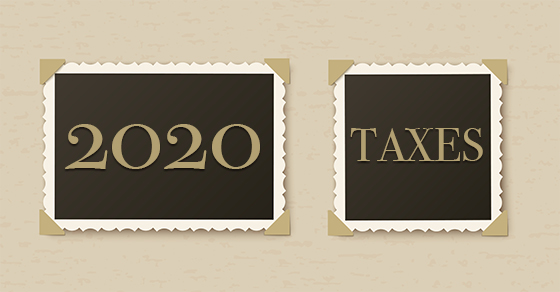Right now, you may be more concerned about your 2019 tax bill than you are about your 2020 tax situation. That’s understandable because your 2019 individual tax return is due to be filed in less than three months.
However, it’s a good idea to familiarize yourself with tax-related amounts that may have changed for 2020. For example, the amount of money you can put into a 401(k) plan has increased and you may want to start making contributions as early in the year as possible because retirement plan contributions will lower your taxable income.
Note: Not all tax figures are adjusted for inflation and even if they are, they may be unchanged or change only slightly each year due to low inflation. In addition, some tax amounts can only change with new tax legislation.
So below are some Q&As about tax-related figures for this year.
How much can I contribute to an IRA for 2020?
If you’re eligible, you can contribute $6,000 a year into a traditional or Roth IRA, up to 100% of your earned income. If you’re age 50 or older, you can make another $1,000 “catch up” contribution. (These amounts are the same as they were for 2019).
I have a 401(k) plan through my job. How much can I contribute to it?
For 2020, you can contribute up to $19,500 (up from $19,000) to a 401(k) or 403(b) plan. You can make an additional $6,500 catch-up contribution if you’re age 50 or older.
I sometimes hire a babysitter and a cleaning person. Do I have to withhold and pay FICA tax on the amounts I pay them?
In 2020, the threshold when a domestic employer must withhold and pay FICA for babysitters, house cleaners, etc. is $2,200 (up from $2,100 in 2019).
How much do I have to earn in 2020 before I can stop paying Social Security on my salary?
The Social Security tax wage base is $137,700 for this year (up from $132,900 last year). That means that you don’t owe Social Security tax on amounts earned above that. (You must pay Medicare tax on all amounts that you earn.)
I didn’t qualify to itemize deductions on my last tax return. Will I qualify for 2020?
The Tax Cuts and Jobs Act eliminated the tax benefit of itemizing deductions for many people by increasing the standard deduction and reducing or eliminating various deductions. For 2020, the standard deduction amount is $24,800 for married couples filing jointly (up from $24,400). For single filers, the amount is $12,400 (up from $12,200) and for heads of households, it’s $18,650 (up from $18,350). So if the amount of your itemized deductions (such as charitable gifts and mortgage interest) are less than the applicable standard deduction amount, you won’t itemize for 2020.
How much can I give to one person without triggering a gift tax return in 2020?
The annual gift exclusion for 2020 is $15,000 and is unchanged from last year. This amount is only adjusted in $1,000 increments, so it typically only increases every few years.
Your tax picture
These are only some of the tax figures that may apply to you. For more information about your tax picture, or if you have questions, don’t hesitate to contact your DDK tax advisor for any further assistance!


